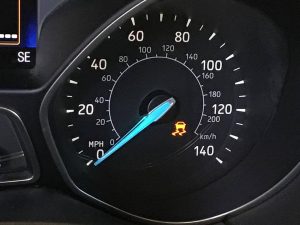
Traction control and ABS are the foundational elements of a car's stability control system. Traction control piggybacks on the antilock brake system (ABS) to detect tire slip during acceleration and maintain traction while accelerating.
ABS does the same for braking. It uses the vehicle's electronic stability systems to compare the vehicle’s trajectory with where the driver seems to want to go, and brakes individual wheels to keep the car on the right course.
Just like any other system in your car, maintenance issues can arise with traction control. In this article, we'll review a few of the most common problems that require professional help.
A Sensitive System
Though traction control provides benefits, it can sometimes be a hassle like when entering or leaving a parking space with rutted snow, for example. Some systems are so sensitive that at the first sign of wheel slip, they immediately reduce power or apply the brakes so much that you go nowhere. Fortunately, a traction control system can be turned off in most vehicles, and you can then resort to the time-honored technique of rocking your vehicle back and forth to power your way out of the snow if you have to.
Dirt, Grime, and Debris
In some cases, the warning light can come on because wheel-speed sensors are covered with road grime or debris. The wheel-speed sensors, wires, connectors, control module, and other components can all suffer intermittent problems or fail completely. The sensors, wires, and connectors, in particular, are located at each wheel making them susceptible to failure; they take a beating from potholes, water, snow, dirt, tar, stones, and other debris. In fact, several GM models from recent years have had a problem with debris faulting the sensors, forcing GM to issue a technical service bulletin to dealerships to address it.
Faulty Wheel-Speed Sensors
Wheel-speed sensors are supposed to detect when one drive wheel is spinning faster than the others — meaning the vehicle is slipping or losing traction. The system will then reduce power and apply the brakes to that wheel. Braking the spinning wheel allows the power to go to the other wheels that have more traction. This principle is what has allowed ABS-based traction control in some vehicles to take the place of limited-slip differentials, which serve the same purpose. When traction control is disabled, you’ll have to control tire slippage the old-fashioned way: by lifting off the accelerator.
What to Look For
A problem in the system will usually cause a dashboard warning light to be consistently illuminated, like the one shown above, indicating that traction control is disabled. Remember that momentary illumination of the warning light is not usually an issue. The light should always come on for a couple of seconds whenever you start the vehicle as well as when the system detects that a wheel is spinning freely and does its job to improve traction.
When the traction control warning light stays on, however, that means the system is not engaging and needs to be checked out. Diagnosing usually requires a scanning tool to read the error code that triggered the warning light. These tools can help pinpoint what the specific issue is, such as a bad speed sensor or connector, and at which wheel(s) are affected.
While traction control is an important safety feature, this repair typically isn't as urgent as disabled ABS or stability. In most cases, you can still drive your car just fine without traction control, so long as the roads are clear and dry. The trouble comes as soon as it rains or snows. Once you start driving on wet or slippery surfaces, it's more difficult to prevent slippage during acceleration.
Servicing Your Traction Control System At V&F
If you notice your traction control light is on, come in to see us as soon as possible. We’ll help you diagnose the problem, make the necessary repairs, and work to prevent it from happening in the future. Plus, all of our auto repair services are backed by an industry-leading 3-year / 36,000-mile warranty on parts and labor! Call us today at (413) 314-2280 or schedule an appointment online.
 This article was originally published in 2019 and has been updated.
This article was originally published in 2019 and has been updated.
 Traction control and ABS are the foundational elements of a car's stability control system. Traction control piggybacks on the antilock brake system (ABS) to detect tire slip during acceleration and maintain traction while accelerating.
ABS does the same for braking. It uses the vehicle's electronic stability systems to compare the vehicle’s trajectory with where the driver seems to want to go, and brakes individual wheels to keep the car on the right course.
Just like any other system in your car, maintenance issues can arise with traction control. In this article, we'll review a few of the most common problems that require professional help.
Traction control and ABS are the foundational elements of a car's stability control system. Traction control piggybacks on the antilock brake system (ABS) to detect tire slip during acceleration and maintain traction while accelerating.
ABS does the same for braking. It uses the vehicle's electronic stability systems to compare the vehicle’s trajectory with where the driver seems to want to go, and brakes individual wheels to keep the car on the right course.
Just like any other system in your car, maintenance issues can arise with traction control. In this article, we'll review a few of the most common problems that require professional help.
 This article was originally published in 2019 and has been updated.
This article was originally published in 2019 and has been updated. 